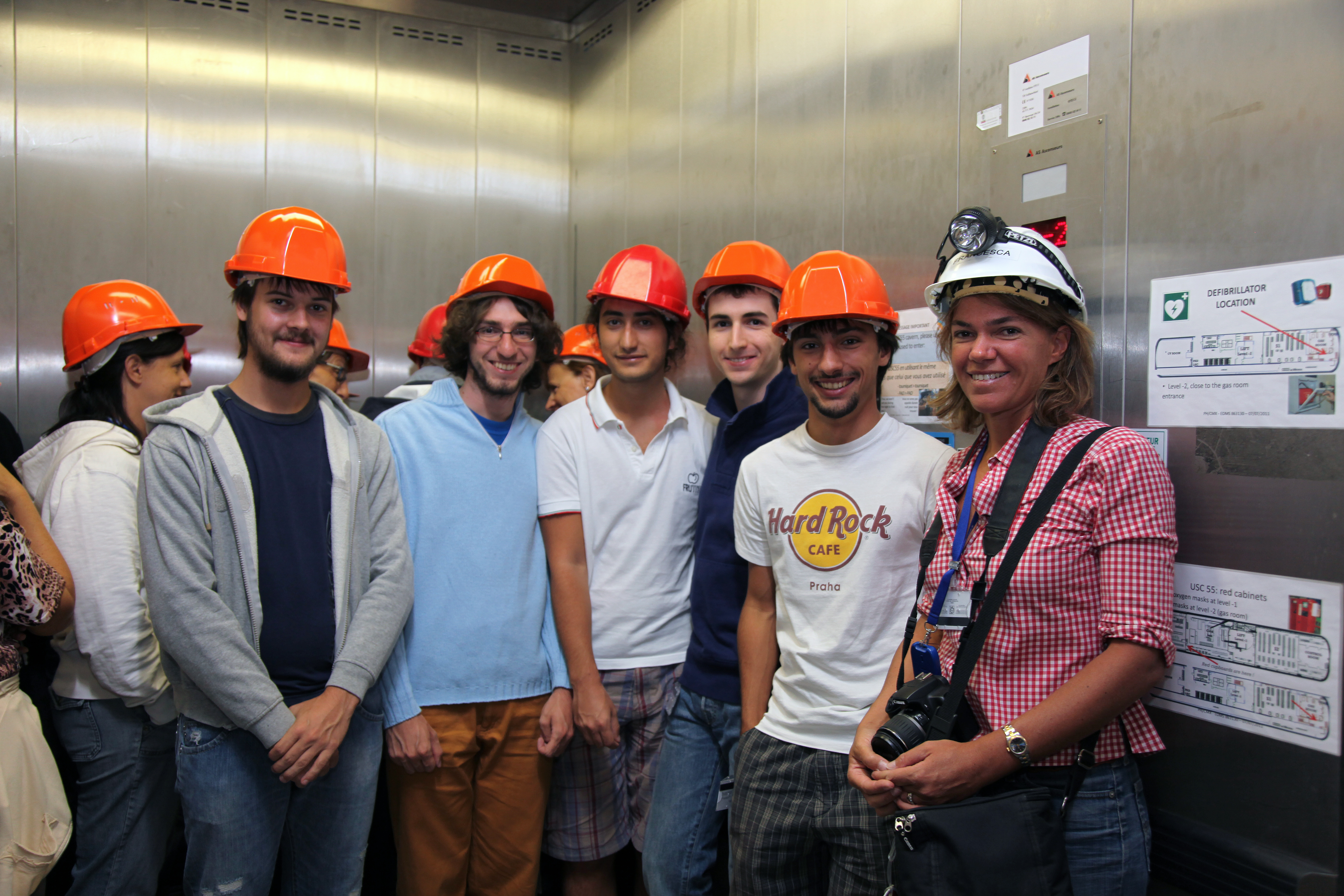
This year, for the first time, the winners of the Italian Physics, Mathematics and Informatics Olympiads received an unforgettable reward from the Italian Ministry of Education, University and Research (MIUR): a trip to CERN. The National Institute for Nuclear Physics in Italy (INFN) was contacted by the Ministry to help organise the trip.
The five talented students were at CERN between the 28th of August and the 7th of September. They followed the Italian Teachers’ Programme for the first week. CERN’s teachers' programme takes place in the summer, and the agenda was a perfect blend of lectures on particle physics, meetings with Italian physicists, visits to CERN accelerators and experiments and even a treasure hunt in Geneva! Since there was an LHC technical stop, the students and teachers were taken to Point 5 and visited the CMS detector in its underground cavern.
After a weekend trip to Chamonix and the Mer de Glace, the students participated in a variety of activities in the following week: they spent some time in the scintillating crystal laboratory with Francesca Nessi and Carmelo D'Ambrosio to learn more about how a real detector works; they had long chats about the Higgs boson and about our Universe with some of the Italian theoretical physicists who work at CERN (Gian Giudice, Guido Altarelli and three young TH section fellows); they visited the IT division; and they performed a scanning exercise to learn how to identify particles in the LEP and LHC environments. On the 5th of September, the students spent the afternoon in the CMS Control Room in the company of the shifters, learning how data-taking works.
The students were very enthusiastic about their stay at CERN and were very impressed by the people they met and the science being done here. It would be great to have student visits of this kind as part of an official CERN programme, so that the participants could benefit from meeting with students from other countries.
— Submitted by Francesca Cavallari
- Log in to post comments

